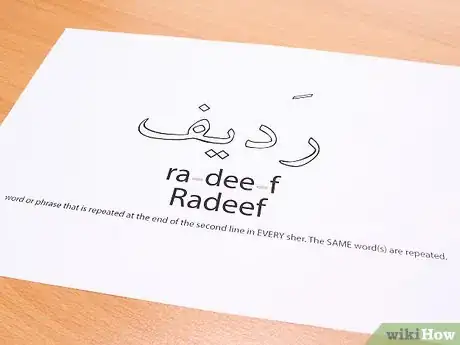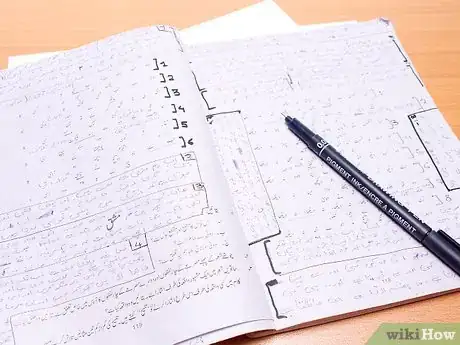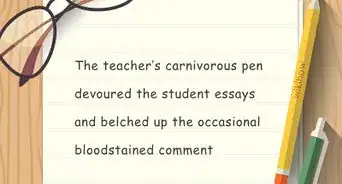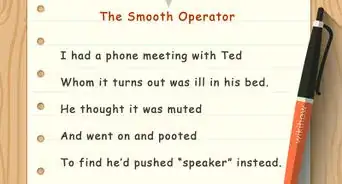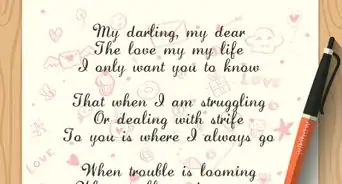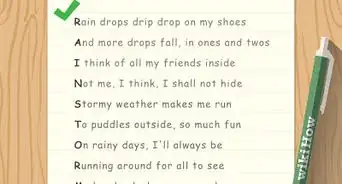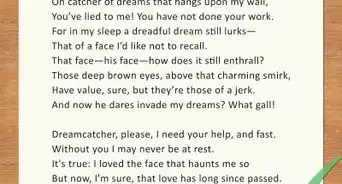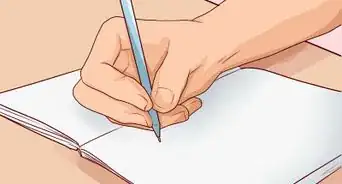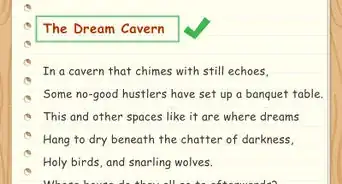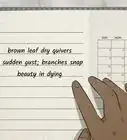wikiHow is a “wiki,” similar to Wikipedia, which means that many of our articles are co-written by multiple authors. To create this article, 26 people, some anonymous, worked to edit and improve it over time.
This article has been viewed 142,244 times.
Learn more...
Want to try your hand at writing a ghazal? Pronounced roughly like English guzzle, this centuries-old form of poetry and song hails from Persia (Iran), Pakistan, and India. [1]
This fun and interesting poem is easy to write once you've nailed down the different rules and parts—and we're here to help you do just that! Read on for an in-depth look at how to draft your very own ghazal.
Would you like to learn to write a ghazal? We will teach you!
Though at first the rules may seem a puzzle, we will teach you!
Glossary
(These terms are from Arabic unless otherwise noted.)
- Bahr (بحر "sea") — Refers to the meter of the poem. In Arabic, the meter is often quite strict. In English, for our purposes, it refers to the number of syllables in a line.
- Ghazal (غَزَل) — An ancient form of Arabic poetry, now diffused to many languages and cultures, and still actively written in our time. Read on to find out how to do this!
- Maqta (مقطع "division, part, section") — The last sher (couplet) of a ghazal. Typically it includes the poet's takhallus (pen name).
- Matla (مطلع "beginning") — The first sher (couplet) of a ghazal. It tells the reader the radif (refrain) and qaafiya (rhyme).
- Qaafiya (قافیہ "rhyme") — The rhyme, discussed in Step 2.
- Radif (ردیف "row, order") — The refrain, discussed in Step 1.
- Sher (شعر "poem") — Any couplet of a ghazal. (As noted below, each couplet constitutes a mini-poem.) This is the Persian term, and the one used in this article. The Arabic term is bayt (بیت "house").
- Takhallus (تخلص "liberated", hence "ending") — The poet's pen name or nom de plume, typically included in the maqta as a sort of sign-off.
Steps
Example Ghazal
In this example, the radif is "I do not know", while the qaafiya (the rhyme preceding it) is -ate, as in slate, fate, depreciate, etc. In the example, each line contains 14 syllables, but any length is fine - it's up to you.
Stranger at the Gate
Who cares about the stranger at the gate? I do not know
The poor orphan, abandoned to his fate? I do not know
Where once I had the answers, now my mind is full of doubt
How do these certainties depreciate? I do not know
From noon till night our ardent looks would scandalize the town
Why is it that your eyes are filled with hate? I do not know
It used to be that man respected man for what he did
These days are we just numbers on the slate? I do not know
The wisdom of the years is something valued now by none
The butt of standing jokes, this balding pate? I do not know
The saqi1 turns his back; how many skins will be required,
oh my love, this unholy thirst to sate? I do not know
Once upon a time Amir was counted a believer
To every question now I simply state, I do not know
1Saqi: a wine-server in a medieval Persian tavern
Released to Creative Commons by the author
